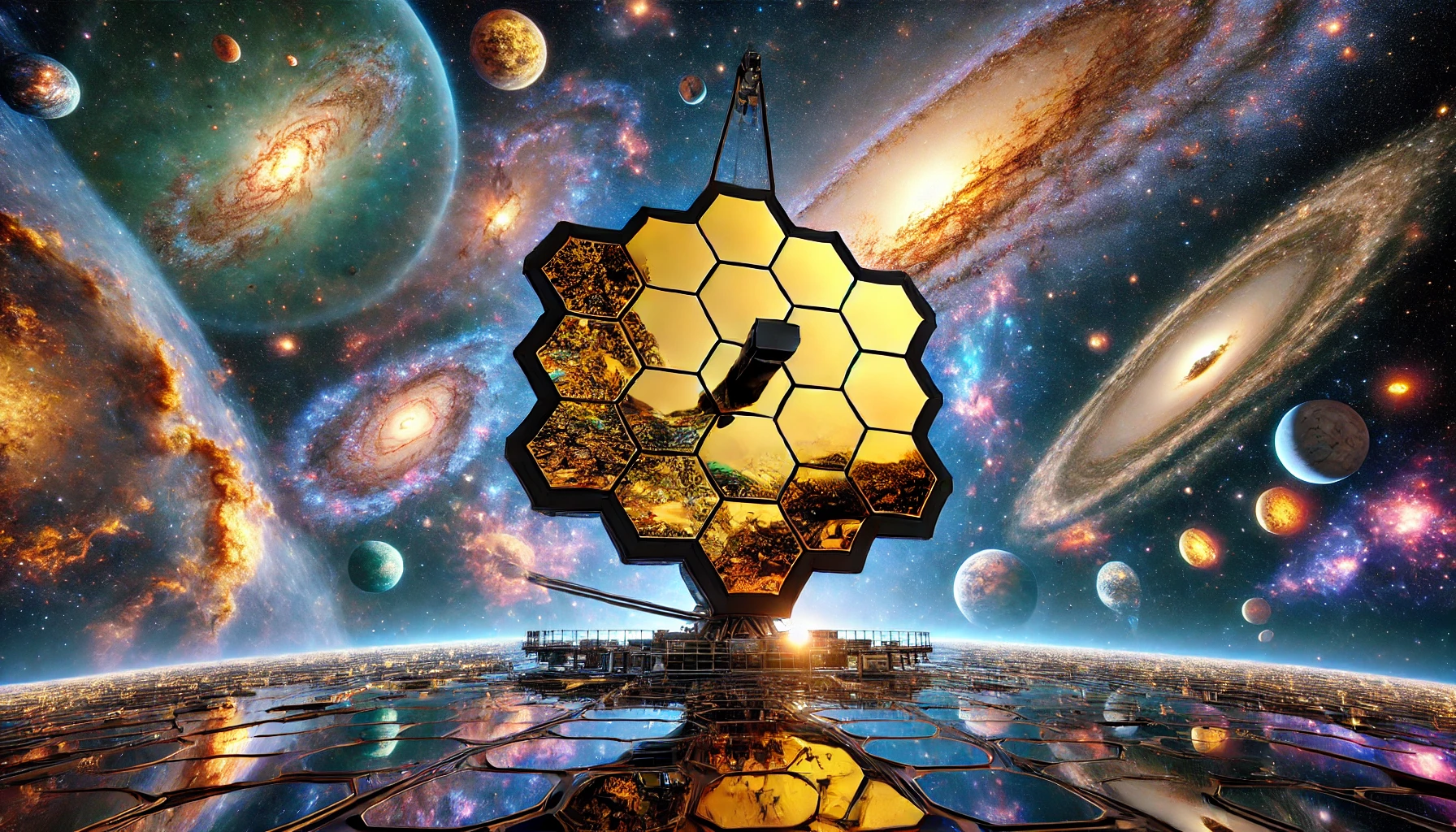Scientists have seen light from galaxies so old their glow started traveling before Earth even existed. That’s not science fiction—it’s what the James Webb Space Telescope (JWST) is doing right now. This telescope is looking back in time, catching details that were once invisible. Every image and data set adds to a bigger story, rewriting what we thought we knew about space.
Astronomers expected James Webb to improve our view of the universe, but no one imagined just how much. Its infrared vision pierces through dust, revealing stars being born. It finds planets with water vapor in their skies. It even challenges theories about the early universe. This telescope isn’t just answering questions—it’s creating new ones.
Seeing the Universe Like Never Before
Before JWST, space telescopes struggled to see the earliest galaxies. Hubble gave us stunning images, but it had limits. Dust blocked its view of forming stars, and distant galaxies were too faint for it to catch. Webb’s infrared sensors solved these problems, making the invisible visible.
Why Infrared Light Changes Everything
- Infrared light cuts through cosmic dust, letting us see star nurseries.
- It detects heat, so even cold planets and faint galaxies show up.
- Distant galaxies move away from us, stretching their light into the infrared range.
JWST’s infrared vision isn’t just an upgrade—it’s a different way of seeing. It lets scientists study things Hubble never could.
Finding Galaxies We Didn’t Expect
JWST found galaxies that shouldn’t exist. Some are so massive and developed that they don’t fit into current models of how the universe formed. Scientists thought galaxies needed more time to grow, but Webb is showing otherwise.
Some theories suggest that galaxies in the early universe may have formed differently than expected. Others propose that dark matter plays a bigger role than we thought. Either way, something about galaxy formation needs rethinking.
New Clues About the Birth of Stars
For years, star formation remained a mystery. Astronomers knew stars formed in thick clouds of gas and dust, but they couldn’t see inside those clouds. Webb can.
Peering Into Star Nurseries
JWST’s infrared cameras slice through dust, revealing stars at different stages of formation. This allows scientists to track how stars grow, from gas clouds collapsing to the first nuclear reactions inside them.
Discovering Newborn Planets
Where there are stars, there are planets forming around them. JWST captures swirling disks of dust around young stars, the birthplaces of planets. Some of these disks have rings, hinting at planets already shaping their surroundings.
These discoveries help answer a long-standing question: How common are planetary systems like our own? Early results suggest that planet formation may be more varied than expected.
Revealing the Secrets of Exoplanets
Astronomers used to wonder what distant planets were made of. Now, Webb can tell us.
Atmospheres Unlike Anything We’ve Seen
JWST doesn’t just detect exoplanets—it studies their atmospheres. It breaks down light passing through a planet’s sky, identifying molecules like water, methane, and carbon dioxide.
- Some exoplanets have water vapor but lack solid surfaces.
- Others have thick, scorching atmospheres like Venus.
- A few may have the right conditions for life.
These results are changing the way scientists look for habitable planets. Instead of just focusing on Earth-like worlds, they’re considering a wider range of possibilities.
Finding Planets Where We Didn’t Expect Them
Webb is spotting planets that challenge previous assumptions. Some orbit stars in ways that don’t match standard planet formation theories. Others have bizarre atmospheres that force scientists to rethink how planets evolve.
Rewriting the Story of the Early Universe
Astronomers thought they had a good timeline for how the universe developed. JWST is proving them wrong.
The Universe Grew Up Faster Than Expected
Webb found galaxies that formed much earlier than expected. Instead of taking billions of years to grow, some galaxies appeared within a few hundred million years after the Big Bang. This changes how scientists think about galaxy formation and the role of dark matter.
The First Black Holes Might Have Been Huge
Black holes grow when they feed on gas and stars, but Webb has found some that seem to have started out massive. If confirmed, this would mean black holes formed differently in the early universe than they do today.
Challenging What We Thought We Knew
Every major discovery from JWST forces scientists to rethink something. The telescope isn’t just filling in gaps—it’s tearing up old models and forcing a rewrite.
Galaxies Formed Faster Than We Thought
The number of early galaxies suggests something sped up their formation. Either star formation worked differently back then, or dark matter played a larger role than expected.
Planets May Be More Varied Than Assumed
Webb’s exoplanet findings suggest that many planets don’t fit into current categories. Some have clouds made of sand, while others have unexpected chemical makeups. Planet formation may be a more chaotic process than previously believed.
Black Holes Might Have Started Differently
If Webb’s data holds up, early black holes didn’t grow the way modern ones do. Instead of starting small and feeding on matter, they may have formed directly from collapsing gas clouds.
Final Thoughts
The James Webb Space Telescope is showing us a universe that doesn’t match expectations. Galaxies appeared sooner than thought. Stars and planets formed in ways no one predicted. Black holes may have started off enormous instead of growing over time. Every answer creates more questions, making astronomy more exciting than ever.
Instead of just refining our understanding of space, JWST is proving that we had some things wrong. And that’s what makes it one of the most important scientific tools ever built.
